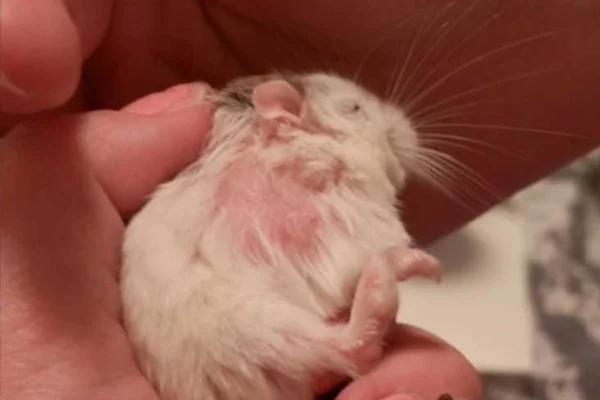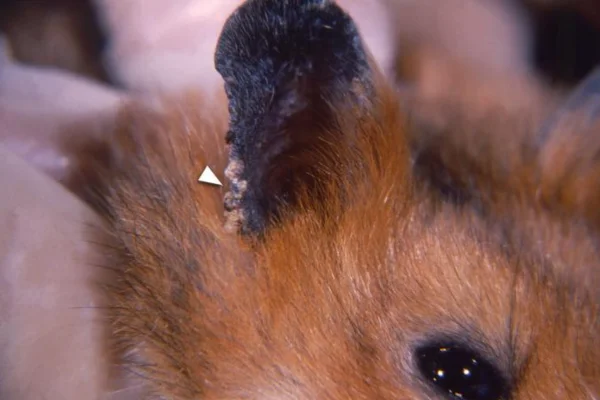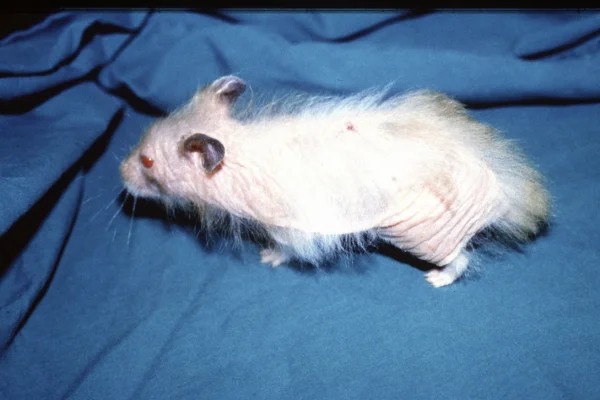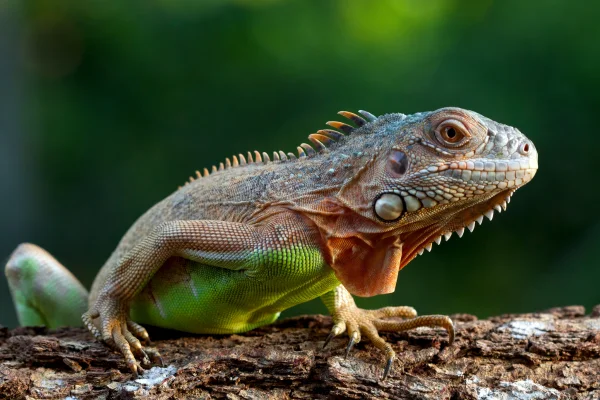All About Mites in Hamsters
Symptoms, Treatments and Essential Care
Mites in Hamsters - Hamsters are adorable little rodents, known for their energy and curious behavior. However, like any other pet, they are susceptible to a variety of health problems. One of the most common and often overlooked is infestation by mites. These tiny parasites can cause your hamster a lot of discomfort, and it's essential that owners know how to identify and treat this problem. In this article, we'll explore the symptoms, treatments and care needed to protect your hamster from mites.
What Are Mites and How Do They Affect Hamsters?
Mites are small parasites that can infest the skin of hamsters. Although they are almost invisible to the naked eye, their presence can cause great discomfort to the animal. Mites live on the skin and feed on dead skin cells, causing irritation, itching and, in severe cases, skin lesions. There are different types of mites that can affect hamsters, but the most common are scabies mites and ear mites.
Common Types of Mites in Hamsters
- Scabies mites (Sarcoptes scabiei): These mites cause mange, an extremely uncomfortable condition that causes intense itching and, eventually, hair loss. They penetrate the hamster's skin, forming tunnels where they reproduce.
- Ear mites (Notoedres cati): Although they are more common in cats, ear mites can affect hamsters. They cause irritation and itching in the ears, leading to inflammation and the formation of scabs.

How Do Hamsters Catch Mites?
Hamsters can be exposed to mites in various ways. One of the most common ways is through contact with other infested animals, such as other hamsters or even wild rodents. In addition, mites can be introduced into the hamster's environment through contaminated materials, such as bedding, toys or accessories.
Contents
Symptoms of Mite Infestation in Hamsters
Identifying the presence of mites in your hamster can be challenging, especially at the beginning of the infestation. However, some signs are clear indications that something is wrong:
- Excessive itching: One of the first signs that something is wrong is a hamster scratching incessantly. This usually indicates that the skin is irritated and, in many cases, is caused by the presence of mites.
- Hair loss: As the infestation progresses, you may notice areas of hair loss, especially around the ears, neck and armpits. This is due to continuous irritation and scratching.
- Redness and skin irritation: A hamster's skin can become red and inflamed, with the presence of small sores or scabs. These symptoms are signs that the mites are causing significant damage to the animal's skin.
- Change in Behavior: Hamsters that are infested with mites can become more irritable or lethargic. They may avoid interactions or spend more time hiding.
Diagnosis of Mite Infestation
If you suspect that your hamster has mites, the first step is to take him to the vet. The diagnosis is usually made through a skin scraping, where a small sample of skin is examined under a microscope to check for the presence of mites.
It is essential to get an accurate diagnosis, as the symptoms of mites can resemble other skin conditions, such as bacterial or fungal infections.
Treatment of Mites in Hamsters
Treating mites in hamsters is relatively simple, but it must be done carefully and under veterinary supervision. Here are the main steps:
- Topical Medicines: The vet can prescribe a topical treatment, such as ivermectin or selamectin, which is applied directly to the hamster's skin. These drugs kill the mites and help relieve irritation.
- Medicinal baths: In some cases, the vet may recommend medicinal baths to help relieve itching and remove mites from the hamster's skin. It is crucial to only use products that are safe for hamsters, as they are very sensitive to chemicals.
- Environmental cleanliness: It is essential to clean and disinfect the hamster's environment to prevent re-infestation. This includes changing all the bedding, washing toys and accessories with hot water and disinfecting the cage.
- Isolation: If you have more than one hamster, it is important to isolate the affected hamster until the treatment is complete, to prevent the mites from spreading.
Home Remedies: Are They Effective?
Although there are some home remedies suggested for treating mites, such as using coconut oil or apple cider vinegar, it is important to exercise caution. Many of these remedies are not scientifically proven and may not be effective in eliminating mites completely. In addition, the use of certain homemade products can irritate the hamster's skin even more.
If you choose to use a home remedy, always consult a vet first to make sure it's safe for your pet.

Prevention: How to Keep Mites Away from Your Hamster
Prevention is always the best strategy when it comes to mites. Here are some tips to keep your hamster safe:
- Regular cage maintenance: Clean the hamster's cage regularly, changing the bedding and washing the accessories to minimize the risk of infestation.
- Isolation of New Animals: If you get a new hamster, keep it in quarantine for a few weeks before putting it with other hamsters. This helps to ensure that it isn't carrying mites or other diseases.
- Regular Inspections: Check your hamster's skin regularly for signs of irritation or mites. The sooner you identify a problem, the easier it will be to treat.
- Control of contact with wild animals: If you live in an area where there are wild rodents, take steps to prevent them from coming into contact with your hamster, as they can carry mites.
The Importance of Consulting a Veterinarian
Although some health problems can be treated at home, mite infestation is a serious issue that requires the attention of a veterinarian. A professional can provide the correct diagnosis and appropriate treatment to ensure your hamster's health and well-being.
In addition, the vet can offer personalized advice on how to care for your hamster during and after treatment, including tips on nutrition and stress management, which can strengthen the animal's immune system and aid recovery.

Conclusion
Mites are an invisible but real threat to hamsters. Their presence can cause significant discomfort and, if left untreated, lead to serious complications. However, with vigilance, proper care and the right treatment, you can protect your hamster from these parasites and ensure that he lives a healthy and happy life.
Always remember that your hamster's health depends on your attention and care. At the first sign of trouble, acting quickly can make all the difference to your pet's recovery. So stay informed, see your vet regularly and look after your hamster with love and dedication.








